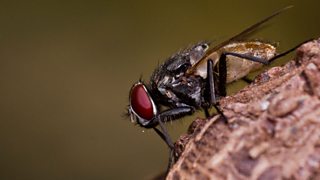7 extraordinary things science has discovered in the last decade
Science has advanced at an incredible pace over the last decade. For its 100th episode, The Infinite Monkey Cage brought together science experts and enthusiastic amateurs to discuss some of the most strange and surprising discoveries – from Saturn's secrets to Neanderthal genes in our DNA...

1. The elusive Higgs boson particle
Also known as “the God particle”, the Higgs boson was discovered in 2012 by scientists working in the Large Hadron Collider at CERN.
The Higgs had long been thought to exist by physicists, but no one had been able to prove it before. This mysterious subatomic particle is what gives other particles their mass.
The significance of the discovery for our everyday lives is yet to be seen. But as astrophysicist Neil De Grasse Tyson says, when quantum physics was discovered people wondered what use it would be, yet today, decades later, it’s “the foundation of the entire information technology revolution”.

Neil De Grasse Tyson uses a Hollywood party analogy to explain the Higgs boson
2. The ability to observe gravitational waves
Einstein first predicted the existence of gravitational waves – ripples in the structure of space and time – in his Theory of General Relativity, over 100 years ago.
At the time, Einstein believed it would never be possible to directly observe gravitational waves. However, in the last ten years scientists have developed technology sophisticated enough to detect these tiny oscillations.
It’s as if we only had sight before, but now we can actually hear.Prof Fay Dowker
Gravitational waves are produced by massive events, such as the collision of two huge black holes, which create ripples that travel billions of light years outwards across the galaxy to reach us.
Physicist Prof Fay Dowker says the discovery heralds “a new era of gravitational wave astronomy”, describing it as like gaining a new sense: “It’s as if we only had sight before, but now we can actually hear.”
3. Saturn’s moon Enceladus has the right conditions for alien life

The Cassini-Huygens space mission which ran for almost two decades, has gathered stunning new data and imagery of Saturn, its rings and its moons.
The Cassini probe revealed that Enceladus, a moon barely bigger than Britain, shoots geysers of vapour, gas and ice hundreds of miles into the sky.
In a flyby of Enceladus in 2015, the probe detected hydrogren in these plumes which suggests that the salty ocean on the moon’s surface has the right conditions to host life.
Listen: Melvyn Bragg and guests discuss Saturn on Radio 4's In Our Time

Brian Blessed gets excited and emotional about Saturn
4. Our ancestors interbred with other species

The Neanderthals may have been extinct for thousands of years, but in 2010, advances in technology enabled geneticists to map the Neanderthal genome using DNA extracted from ancient bones. This led to a startling discovery: our ancestors interbred with other species after they migrated out of Africa.
So in the UK, most of us have a small percentage of Neanderthal genes in our DNA, and scientists have found traces of the Denisovans and other ancient hominid species too.
In short, as Prof Alice Roberts, an anatomist and anthropologist from the University of Birmingham explains, “We just really weren’t clear about the level of shenanigans that went on in human evolution, and now we are.”
Listen: Ancient DNA and Human Evolution (�鶹�� Inside Science)

Alice Roberts on human and Neanderthal interbreeding
5. Scientists have created a “mini-brain” using Neanderthal DNA
Using advanced genetic editing techniques, scientists have been able to replace or delete parts of human DNA with Neanderthal genes and use stem cells to grow an “organoid” – a pea-sized group of cells that acts like a mini-brain, carrying electrical signals.
As Sue Black, an anatomist and forensic scientist from the University of Lancaster explains, their next step will be to attempt to link the electrical signals up to a robot, and “see if they can actually get Neanderthal genes orchestrating movement in another object.”
Scientists have been able to replace or delete parts of human DNA with Neanderthal genes.
6. Young people are now much less likely to drink, take drugs or get pregnant
Statistics have revealed fascinating things about how health and lifestyles have changed over the last decade, especially among young people.
Fewer people aged 18-24 now take drugs and less than half have an alcoholic drink each week. Smoking has decreased by a quarter, too. But the most remarkable change has been in teenage pregnancy rates, which have halved since 2009 – from 1 in 30 to less than 1 in 60.
7. The concentration of CO2 in our atmosphere has changed forever

In 2013, the level of carbon dioxide in our atmosphere was measured at 400 parts per million (ppm) for the first time, at Mauna Loa Observatory in Hawaii. By May 2016, it had hit 400ppm at the South Pole too.
Prof Tony Ryan, Director of the Grantham Centre for Sustainable Futures, says: “This is having a profound effect on us and on future generations, and we’re never going to go back. So, in 1962 when I was born, it was 320ppm, 0.03%, now it’s 0.04%... those numbers will pan out to climate change, and climate change will mean that we have to change the way we live.”


























